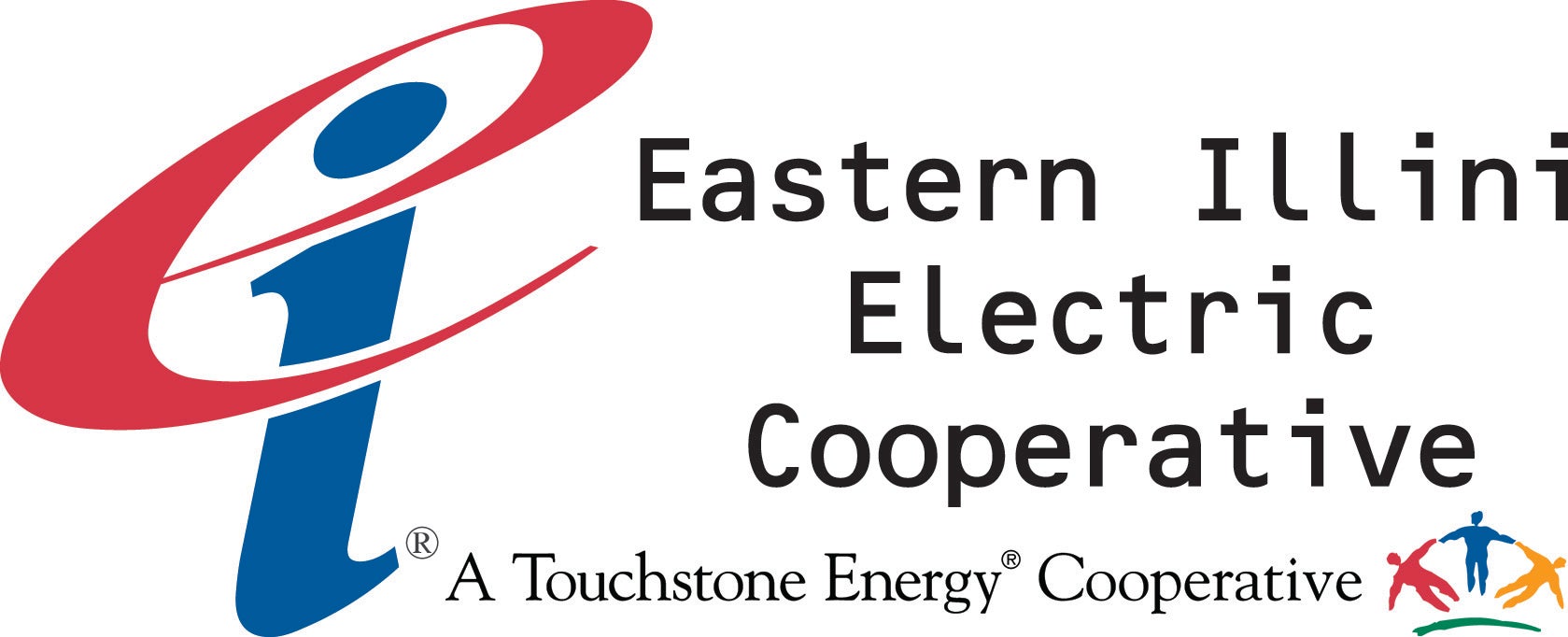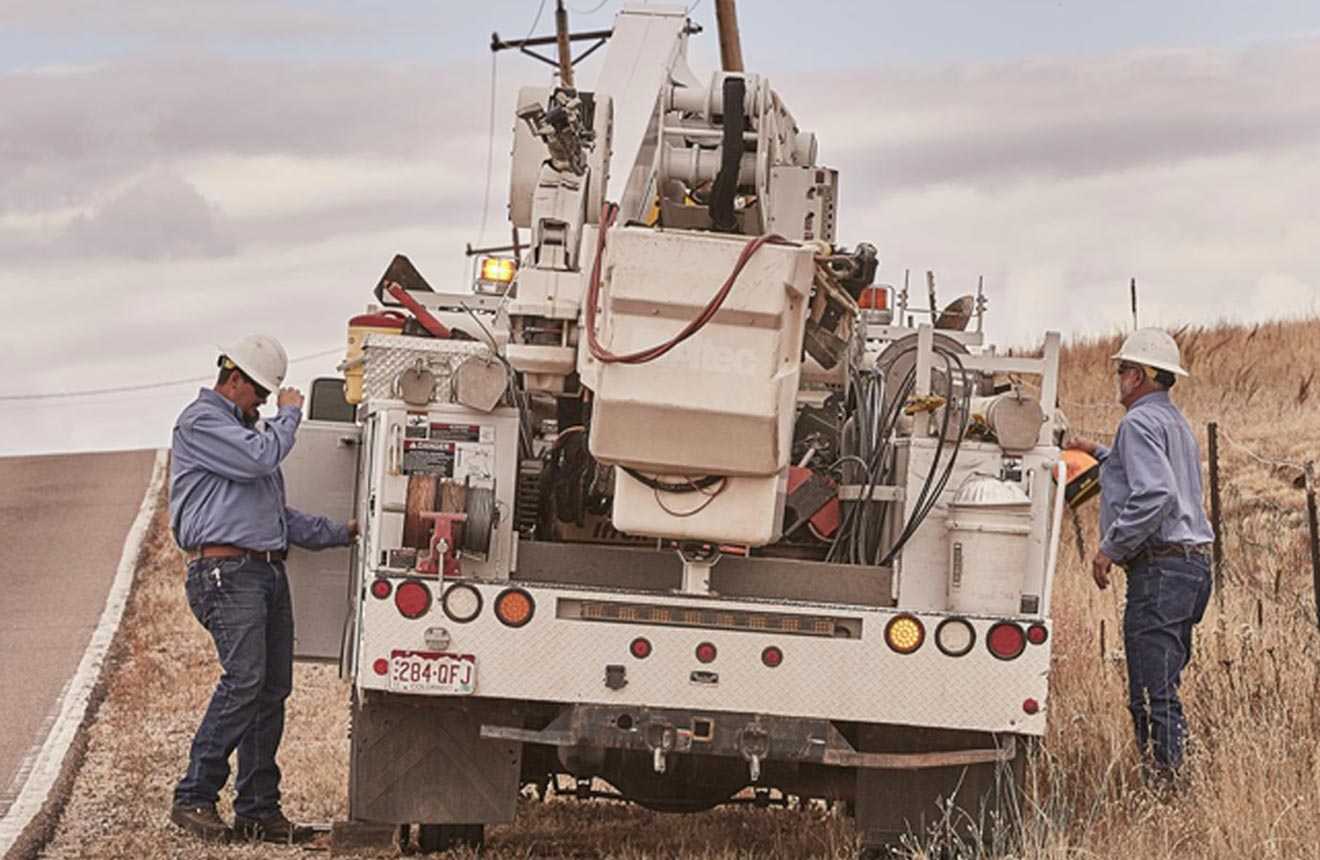EIEC News
Farm work continues to be one of the most dangerous occupations in the U.S.
According to Centers for Disease Control and Prevention, farming is the 6th most dangerous occupation in America. Unfortunately, almost 58,000 adults are injured each year doing farm work and 29 are killed. Over the next few months, farmers will be working longer hours – starting their days before sunrise without resting until long after the sun sets. There will be slow moving tractors, oversized combines, and grain loaded trucks in the fields and on the country roads and also on heavily traveled roadways.
To ensure you and your favorite farmer are safe during the upcoming harvest, follow these farm safety tips:
MAINTAIN YOUR EQUIPMENT
Most farm accidents and deaths involve outdated machinery that lack safety features. Make sure your equipment is maintained according to the manufacturers’ recommendations to prevent rollovers and accidents. Have farm trucks serviced regularly. Conduct a safety check before taking the combine to the field.
BE ALERT ON THE ROAD
Most accidents happen at dawn or dusk, as they are commuting times for drivers. They happen most often when a driver attempts to pass a slow-moving vehicle, or does not realize a farmer is turning or stopping. Drivers need to allow adequate time and distance for farm equipment to make wide turns. Farm machinery typically travels at 25 mph or less, so drivers need to be prepared to slow down to avoid a rear-end collision. Drivers of farm equipment should turn on their flashing lights and use slow moving vehicle (SMV) signs to draw attention to equipment traveling at slow speeds. Be careful of soft edges on the roadway when moving over to allow vehicles to pass.
HAVE A PLAN FOR GRAIN BIN SAFETY
Train and educate farm workers on grain storage hazards and risks involved when entering a grain storage bin. Follow safe bin entry practices like Lock Out Tag Out and utilize a lifeline system. Have an emergency action plan in case an accident happens and make sure everyone on your farm is trained to follow it. There should always be a person outside the bin anytime someone is entering the bin.
GET PLENTY OF REST, EAT HEALTHY, AND TAKE BREAKS
Drink plenty of fluids and have healthy snacks on hand to keep your energy levels up. Don’t push yourself past healthy limits. Accidents are more likely to happen once fatigue sets in. Drive the combine only while you are alert and aware of your surroundings. Hours of steady operation can lull you into a hypnotic state. To avoid dangerous situations, schedule a break for all workers every two to three houses. Change jobs with someone else who can run the combine for awhile. Accidents are more likely to happen once fatigue or dehydration sets in.
TELL YOUR FAMILY & OTHERS WHERE YOU’LL BE WORKING AND WHEN
Keep the lines of communication open. Always have a cell phone on you in case of emergencies. Do your part to make this a safe and healthy harvest season.
The Association of Illinois Electric Cooperatives (AIEC) recently held their annual meeting in early August in Springfield. Cooperative directors and staff from across the state attend this event. Among the many excellent topics, there was a presentation that was especially pertinent to the rural areas served by electric cooperatives.
We have all heard and seen many examples in our local region of the decline of rural small cities, towns, villages, and the surrounding communities.
It was heartwarming to hear the views and work of Zachary Mannheimer and others with McClure Engineering Company (based in Iowa). Their place maker group works with rural communities and towns to revitalize and establish viable businesses that will hopefully attract and retain millennials and the younger generations who will establish roots in these areas.
Various surveys show that the younger generations want to move out of the cities and into more rural areas. Some of the key drivers mentioned included:
– Access to hi-speed internet service
– Flexible work hours
– Recreational activities
– Connecting across generations
– Cultural amenities and other related activities important to them
Interestingly, many of the successful examples cited included microbreweries serving as a catalyst for or spin-off from development. It is good to know there is activity to improve rural areas.
Passing the torch
At a recent EIEC employee safety meeting, a panel of retirees (with retirement dates ranging from 1997 to 2017) regaled current employees with humor, stories, lessons learned, and advice. Many of the retirees commented on the number of new (and young) faces in the audience.
Included among the various themes discussed were:
– The importance of safety in all aspects of the co-op
– Appreciation for the opportunity to work for EIEC and the pride they had in serving and representing members (who are the cooperative’s owners)
– Sharing of work practices and cooperation among cooperatives both statewide and nationally
– Changing technology over the years and the increasing pace of change
– Awareness of generational change and differences among employees
– The culture, spirit, and family nature of EIEC and of co-ops in general
As current employees, we are doing our best to continue the cooperative principles and legacy of over 80 years of dedicated service by employees throughout the years to our members.
We hope you will take time to enjoy the cooler weather as we transition into early fall on the calendar.
Cooperatively,
Bob Hunzinger

Early August marks the halfway point of the calendrical summer season – although most of us view Labor Day as the end of “real” summer. (Students may view the start of school in August as the end of their summer!)
The late and wet spring and resulting delayed planting have caused many challenges in what seems to be somewhat unusual weather patterns this year. Let’s hope for a good growing season and a long, warm, and dry harvest season to lead into winter.
We recently took some time to visit our daughter in the state of Washington. I’ve included a few photos of the trip along with this article.
It is a beautiful state with a stark contrast of geography from Puget Sound in the Seattle area, to the awesome sight of Mt. Rainier in the Cascades mountain range, to the high desert conditions and minimal plant life in the east side of the state.
We were fortunate to visit Vancouver and participate in Canada Day on July 1 (their Independence Day), as well as to enjoy the traditional July 4th celebrations and fireworks in eastern Washington. We also toured Reactor B at the Hanford facility. This was the first reactor in the world to manufacture plutonium during World War II. Some of the plutonium from that site was used in the bomb that was dropped on Nagasaki Japan, which effectively ended the war. It was amazing to see what was accomplished in such a short time to build a manufacturing complex with nearly 50,000 workers in the middle of a desert in eastern Washington during that time frame without computers or modern construction equipment. Many of the technological advances from that era have changed the way of life for us as compared to our grandparents’ generation and helped to shape the modern geopolitical world.
For those of you that were not able to attend our Annual meeting in early June, I did want to pass along one of the topics I discussed. As I have previously mentioned, EIEC completed a Cost of Service Study in 2018, and we are preparing for the follow-up rate study later this year. EIEC has not changed its distribution rate components since 2013. We will need to adjust our rates soon (our current 2019 budget year has no increases). We are continuing to review and analyze the cooperative’s needs and will keep you advised of any Board decisions.
The end of August brings the start of football season and cooler evenings – make sure to support your favorite local high school and college football teams.
Cooperatively,
Bob Hunzinger
Questline Engage
How to Boost Your Bottom Line Using Energy Efficiency
Money saved from energy efficiency can directly impact your bottom line. Efficiency improvements can reduce your operating costs, lower your energy bills and increase profits. Isn't it time you started investing in energy efficiency?
Holiday Season: 12 Days of Energy Savings
Celebrate the holidays with lower energy bills using these 12 cost-saving tips.
Going Electric at Home: Home Heating
Home electrification is the future. How we heat our homes will change for the better with highly efficient heat pump technology.
You Can Perform a Home Energy Walkthrough
See how you can take the first steps to saving energy and increasing comfort with a home energy assessment.

